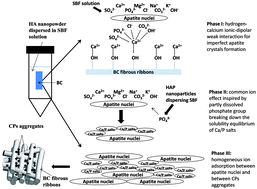Bioabsorbable cellulose composites prepared by an improved mineral-binding process for bone defect repair
Abstract
Bioabsorbable bacterial cellulose composites were prepared separately by immersing bacterial cellulose (BC) in different simulated body fluids (SBF) followed by incorporating cellulase enzymes into BC. The biomineralization of BC in SBF has been intensively documented and generally involves a tedious preparation. This study revealed an improved approach to disperse hydroxyapatite (HA) nanopowder to a saturated concentration (1.0×) of SBF, which was able to enhance the total amount of calcium phosphates (CPs) bound to BC composites. Such a simplified approach could be used to replace oversaturated concentration (1.5×) of SBF to prepare BC/CPs composites and achieve equal or even better material properties. The incorporation of cellulosic enzymes into BC/CPs composites verified the bioabsorption of BC where composites were able to achieve an in vitro bulk biodegradation with a yield of 96% glucose released. Cell culture of mouse osteoblasts also demonstrated the good biocompatibility of the BC/CPs composites prepared by using the simplified approach. This enzyme-incorporating BC/CPs composites studied show promise as bioabsorbable carriers delivering CPs for bone defect repair.


 Please wait while we load your content...
Please wait while we load your content...